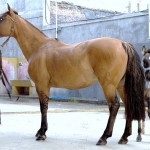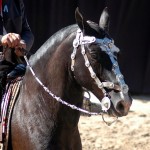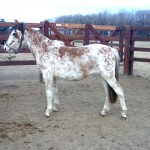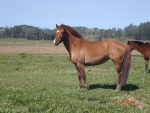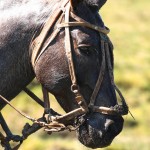Criollo Horse
The Criollo Horse is a breed of hardy and enduring horses that is native to Argentina, Uruguay, Paraguay and Brazil. Known for its astounding stamina and disease-resistant power, the very popular Criollo is widely adored for its style and refinement.
These are small-sized horses but feature a muscularly strong structure and well-developed joints. They can easily endure racing long distances, and is often considered to be the best of its type. They are also good for trail riding, pleasure mounts, rodeo competitions, and polo.
Criollo Horse Pictures
- Argentine Criollo Horse
- Argentine Criollo Tack
- Criollo Horse Baby
- Criollo Horse Colt
- Criollo Horse Images
- Criollo Horse Mare
- Criollo Horse Pictures
- Criollo Horse Stallion
- Criollo Horse Stud
- Criollo Horse
Quick Information
| Pronunciation | Cree-o-low |
| Also known as | Argentine Criollo, Crioulo (Brazil), Costeño/Morochuco (Peru), Corralero (Chile), Llanero (Venezuela) |
| Temperament | Independent, tenacious, strong, aloof |
| Physical Characteristics | Medium-sized straight to convex head; medium stature, muscular neck; short back; well-sprung ribs; brawny quarters; little cannon bones; dense mane and tail hair |
| Colors | Line-backed dun, buckskin, palomino, blue or strawberry roan, black, chestnut, grullo, bay, brown, gray and overo colors |
| Common Use | Endurance riding; general riding; as saddle horse; work with livestock |
| Life Expectancy | 40 years |
| Weight | Medium |
| Height (size) | 14.3 hands (average) |
| Health | Generally healthy, no known breed-specific diseases |
| Gaited | Some are gaited while others not |
| Popular Traits | Endurance capabilities, living in harsh conditions, disease-resistance |
| Feeding/Diet | Frugal eaters; can thrive on little grass |
| Country of Origin | Argentina, Uruguay |
| Year/Time of Development | 16th Century |
Criollo Horse Training Video
History and Origin
In 1535, purebred Andalusian stallions were imported to South America by Pedro de Mendoza from Spain. During 1540s, the Spaniards were driven out of Argentina by the locals, releasing a few horses in the wild. The feral population of these horses thrived and spread all across the plains of the ‘Pampa’.
Over the decades, these horses bred in the wild, thus adapting themselves to the harsh climatic conditions of the region, ready to withstand the rough winters and the dry summers. These horses were captured by Native Indians, the Gauchos and early European settlers to be used as pack animals.
All through the 19th century, these horses were crossed with the imported European Thoroughbred and North American horses, resulting in a larger, hardier, multi-purpose breed at the cost of degeneration of the native breed.
A breeders association was formed in 1923 after the breeders from Argentina planned to create a registry for the purebred criollos. In 1934, Dr. Solanet led the breeders association, developing a stud book (after much infighting) for this new breed. The new standard defined an individual’s characteristics with a much tall and leggy structure, a square body, and a more angular hock.
Interesting Facts
- Among all the available colors of the Criollo, the line-backed dun is the most popular.
- In 1972, a new breed of horses named the ‘Azteca’ was first developed in Mexico mixing the Andalusian, the American Quarter Horse, and the Mexican Criollo bloodlines.
- In Argentina, an endurance ride for the Criollos is held every year that lasts for 15 days, covering 750 km. The participant Criollos must carry 242 pounds without food, except those that are found along the trail.
- The criollo horse has contributed to Argentina’s world-famous polo ponies.
- ‘Mancha’ and ‘Gato’ were two popular Criollos that rode 13, 350 miles between Buenos Aires and New York. At one point in the journey, they reached an altitude of 19,250 feet, and also crossed 93 miles of desert in Ecuador in 120-degree heat without drinking water.
- The word ‘criollo’ literally means “of Spanish origin”.


